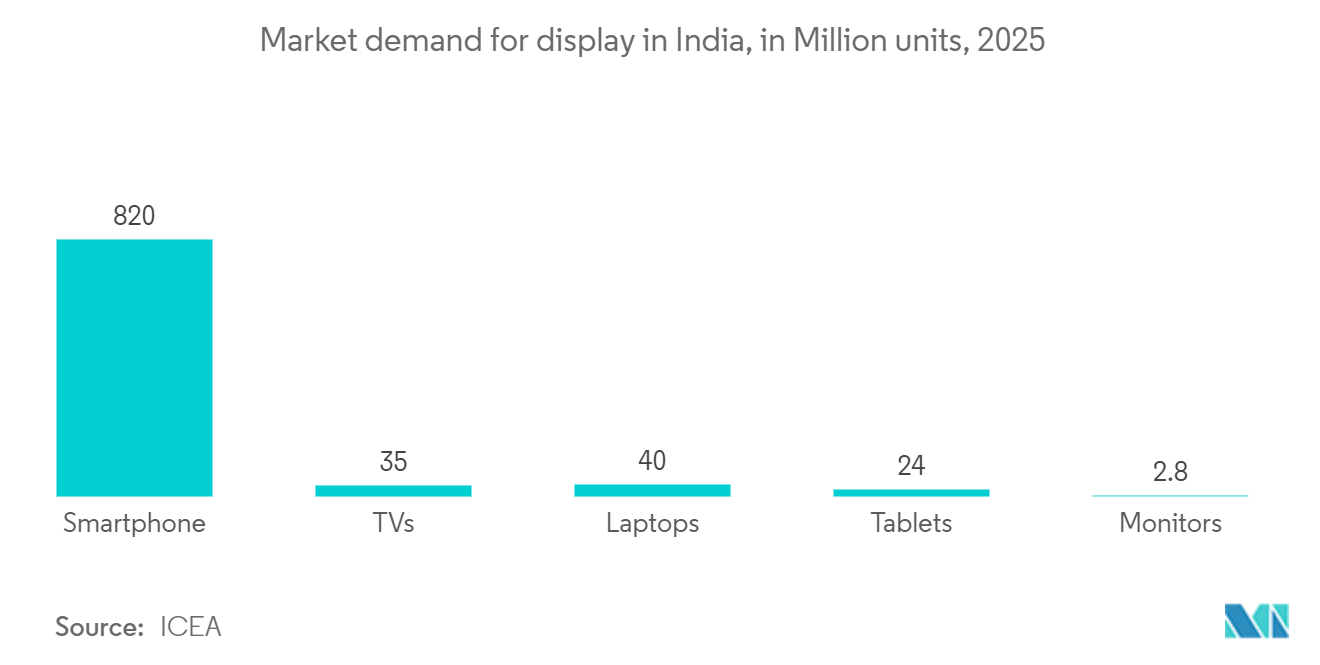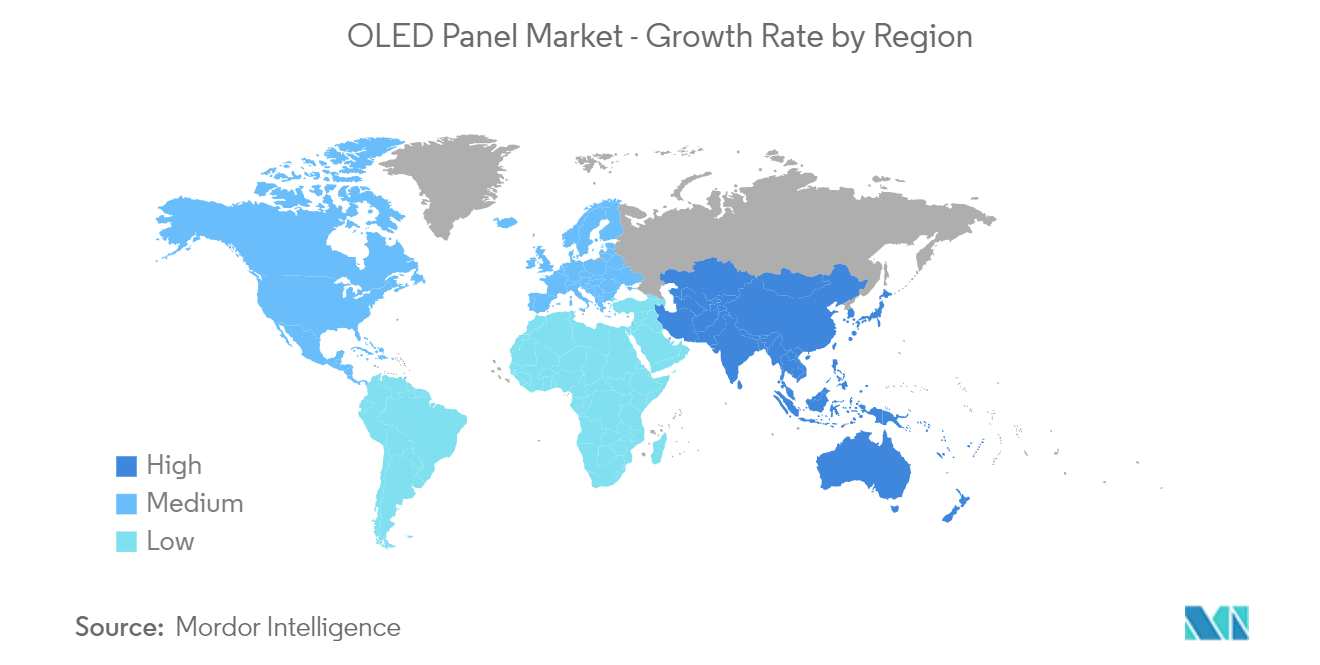Market Trends of OLED Panel Industry
AMOLED Display in Smartphone is Expected to Witness High Growth
- AMOLED is an OLED display technology used in tablets, smartwatches, game consoles, digital cameras, portable music players, and music-making equipment. The line pixel states are stored using a thin-film transistor (TFT) and a storage capacitor. AMOLED panels are far quicker than their passive matrix organic light-emitting diode (PMOLED) and can easily fit into displays of any size. In addition, they are more energy-efficient than previous display technologies, offer more vivid image quality and a broader viewing angle, and respond to motion more quickly.
- Globally, rapid urbanization, growing income levels, and expanding leisure and entertainment demand favorably impact consumer electronics sales. This is one of the most significant factors promoting the expansion of the AMOLED display sector. The operating expenses of manufacturing are anticipated to rise as a result of inflation in several places, including Sudan, Syria, Zimbabwe, etc. However, there are a number of benefits that AMOLED displays offer over other display technologies, including enhanced picture quality and a high-resolution display, both of which are propelling the market's expansion.
- Flexible AMOLED displays are often used in the creation of mobile phones, monitors, and wearable technology because they consume less energy and are more affordable than other displays. The operating expenses of manufacturing are anticipated to rise as a result of inflation in numerous places, including Sudan, Syria, India, and other countries.
- Technological advancements and the increasing use of OLED displays in smartphones provide lucrative growth opportunities. Furthermore, growing investments in OLED development by prominent electronics companies such as LG, Philips, and Sony will drive industry evolution during the growing period. For instance, in June 2022, LG Display collaborated with the Korean bakery Paris Baguette to install 38 transparent OLED displays for use as digital screens.
- Further, the OLED panel requires no additional backlighting, and it is emissive, due to which overshadows the flat panel displays traditionally used in smartphones. Additionally, owing to the superior properties, such as less thickness and bright output, mobile manufacturers have been increasingly incorporating AMOLED panels in their products, which is likely to drive market growth.
- Additionally, Samsung, one of the leaders in the OLED panels market, incorporates AMOLED and Super AMOLED display technologies in most of its smartphones.
- Continuous investment undertaken by numerous display factories to expand AMOLED production lines will boost the AMOLED penetration rate in the market. Moreover, the increasing demand for smartphone displays across the globe, owing to the increasing smartphone penetration rates, is expected to propel the demand for AMOLED panels in the market.

Asia Pacific Occupies the Largest Market Share
- Asia-Pacific is the biggest market for OLED panels as most key players, including LG and Samsung, have manufacturing facilities in the region. Additionally, several TV and signage display manufacturers and other vendors have headquarters in the APAC region.
- Due to the trade war between the United States and China, a large portion of the budget planned by the Chinese government is percolating into the display industry. In contrast, the semiconductor industry, one of the intensive investment promotion industries, foreshadows difficulties.
- Despite its small size, South Korea invests in academic R&D for OLED technology. The country is witnessing huge investments from electronics giants like LG and Samsung.
- China is on track to control 43% of the capacity for manufacturing OLED panels globally, putting it in striking reach of South Korea's rival. With hefty state subsidies, BOE Technology Group and TCL China Star Optoelectronics Technology (TCL CSOT) are two Chinese panel manufacturers that have increased output since around 2019.
- China is overtaking South Korea, whose capacity share, according to a projection made in October by the American market intelligence firm Display Supply Chain Consultants (DSCC), is supposed to reach 55% at the end of 2022. OLED panels, which employ organic light-emitting diodes, are developed and produced in many ways as liquid crystal display panels but need engineers with more in-depth technical knowledge.
- China is the global hub for manufacturing. It is one of the largest exporters of consumer goods and the fastest-growing consumer market in the world. The country boasts one of the world's largest television markets. For instance, LG plans to collaborate with retailers and TV makers in China to expand its OLED panel business. The sales of OLED display panels are expected to grow exponentially in the region.


